Panasonic Air Conditioner Errors: Troubleshooting by Code and Repair Tips
Panasonic conditioning technology has powerful intelligent functional content. Among the significant advantages that convince consumers to give preference to precisely these air conditioners are the somodiagnostics system. We will talk about how Panasonic air conditioner errors are determined by characteristic codes.
From the article we presented, you will learn how, when a malfunction is detected, the control system informs the owners of a brewing or existing failure. Understand how a malfunction is diagnosed, and then the error code is transmitted to the display of the remote control or internal module.
Our tips will help maintain the perfect condition of the unit.
The content of the article:
What is an error code?
Panasonic air conditioners have a good feature set and many automatically controlled systems. This can be fine air purification, ionization of the atmosphere, the destruction of dangerous microorganisms, etc.
Automation turns off the air conditioner when it needs repair or cleaning. New models of Panasonic air conditioners have an advanced self-diagnosis system. Based on its results, the control system detects a malfunction and reports its cause on the control panel.
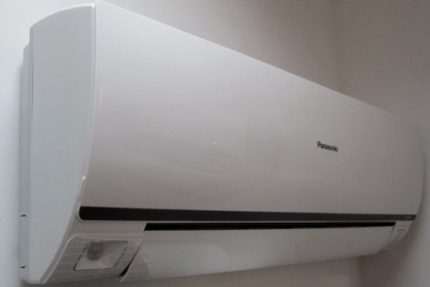
In the event of a serious breakdown, all equipment operation may be blocked. If the failure does not affect the operation of the system, the error message will continue to flash during operation. If air conditioning or split system reveals two or more breakdowns, first a malfunction is indicated with a high priority, then all the others.

However, a working air conditioner in the presence of a blinking error is not a reason to continue the system.Ignoring the sensor signal will aggravate the problem and, as a result, lead to more serious repairs, which entail high costs.
Therefore, when a flashing signal appears, you need to deal with the causes of the failure as quickly as possible and call the wizard to repair or, if you have the necessary experience and skills, solve the problem yourself.
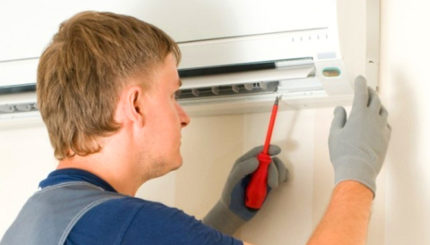
There is also a Check key under the cover that hides the air conditioning buttons, with which you can see all the errors in the system by scrolling with the Up and Down arrows. To reset critical errors, they must be eliminated, after which they will disappear from the display on their own. Errors are also reset after a power reset.
Errors on the remote control of the air conditioner
Different models of air conditioners can implement different methods for reading the error codes generated by the system. However, the timer indicator will always flash on the indoor unit. Let's look at how to determine the error code.
There is a “check” button on the remote
If there is a “check” button on the control panel, to read errors, press and hold it for about 5 seconds. After that, the display will change from the temperature to the existing error codes.
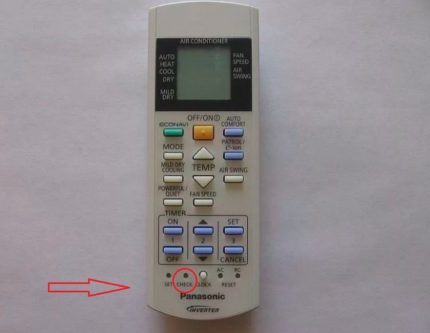
We direct the remote control to the internal module of the air conditioner and use the up and down buttons to scroll through the error log. At that moment when the desired error is displayed on the display, the air conditioner module will make a sound. It is necessary to scroll through the magazine completely from the first code to the last.
There is no “check” button on the remote control
If there is no “check” button on the remote control, press and hold the up key for the timer for 5 seconds. After that, the remote control enters the error code mode.
Next, briefly press the same button and scroll through the errors. At the time of display, the indoor unit will also make a sound. It is necessary to scroll through the entire error log, as there may be several.
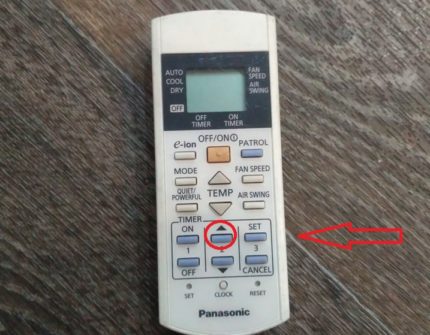
In both cases, after a minute, the remote control will return to the normal temperature display mode.
On the display panel
This is the standard way to find errors on newer air conditioner models. On the indoor unit there is an indicator panel on which the error code is displayed. The owner of the air conditioner is only required to look at this code and find what it means. In multi-split systems, it is necessary to look for errors on all indoor units.
Interpretation of alarms
Let's look at what error codes for Panasonic air conditioners exist and how to find the malfunction by code.
H00.There are no problems with the operation of the device.
H11. There is no communication between the external and internal modules or a malfunction of the control cards. If this error appeared immediately after installing the air conditioner, it means that there were errors in the main line. Perhaps a cliff somewhere. For diagnostics, you can check all the connections suitable for the boards - it is possible that somewhere on the line there is poor contact.
If the error appeared after several years of operation of the air conditioner, then it is time to change the board. It is necessary to find out which board failed - the internal or external unit. If an error occurs, the indoor unit fan may continue to operate.
H12. The total power of the internal modules does not match the power of the external. Such an error appears only in multi-splits.The signal appears 1.5 minutes after switching on.
There can be 3 options:
- incorrectly calculated cooling capacity of indoor units;
- the number of internal modules is incorrectly selected - the external unit cannot cope;
- Error H11 appeared on one of the blocks, then H12 appears on the other (the wrong number of internal modules).
H14. The problem with the air sensor - the sensor captures the room temperature above + 46ºС or below -56ºС. This means a break in the circuit or a short circuit in the sensor.
H15.Problems with compressor temperature sensor. The same problems as with the temperature sensor - either the circuit broke at some point or a short circuit occurred.
H16. Low current consumption by the external module is detected.
A drop in consumption can occur for several reasons:
- not enough freon (low pressure);
- current transformer defect (it is necessary to solder or replace the board);
- failure of the power IPM module.
H17. Similar to H14, but with regard to the external unit - a breakdown of the temperature sensor on the suction pipe in the compressor. Either an open circuit has occurred or a short circuit has occurred on the sensor.
H19. The appearance of an error indicates the fact of jamming of the internal module motor: when the actual speed of the module motor does not correspond to the speed that was set by the processor.
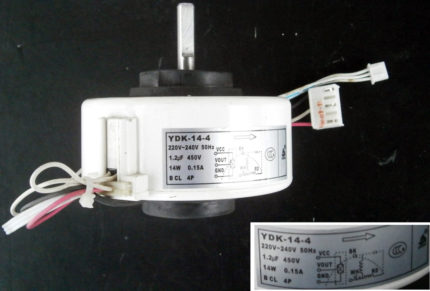
There may be several reasons for the appearance of errors:
- problems directly with the motor of the indoor unit;
- the connectors of the wires of the engine of the indoor unit were loosened;
- problems with the internal module board.
H21. There were problems with the drain pan float in the indoor unit. A signal indicates that the sensor is open. You need to check the sensor logic and see the resistance on the motor windings of the pump, which should be about 200 ohms. Drainage may also become clogged - flushing or flushing of the drainage is required.
H23. Problems with the base sensor No. 1 of the surface temperature of the heat exchanger in the indoor unit. The processor detects the fact of an abnormal heat exchanger temperature above + 80ºС or below -40ºС. You need to look for either an open in the circuit or a short circuit has occurred on the sensor.
H24. Similar problems to H23 with the optional No. 2 surface temperature sensor of the heat exchanger in the indoor unit.
H25. There are problems with the ionization unit. The port is on when the E-Ion is off. There may be problems with the E-Ion board or with the internal module board.
H26. A practical hint, for some reason, the air ionizer has failed.
H27. There are problems with the air temperature sensor. The processor records the outdoor temperature above + 150ºС or below -40ºС. The cause of the failure may be an open circuit or a short circuit on the sensor.
H28. Problems with the sensor No. 1 of the surface temperature of the heat exchanger of the outdoor unit. The processor fixes the temperature on the surface of the heat exchanger above + 110ºС or below -60ºС.
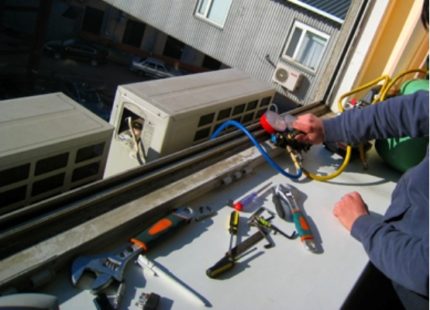
The cause of the malfunction is either a short circuit in the sensor, or an open in the circuit.
H30.Problems with the temperature sensor on the discharge pipe in compressor. The processor captures temperature readings above + 200ºС or below -16ºС. An open in the circuit of this temperature sensor is detected when the condensation temperature is 6 degrees higher than the discharge temperature. The cause may be an open circuit or a short circuit on the sensor.
H33. An interconnect error appears when a voltage mismatch occurs in the data transmission line between the internal and external modules.There are problems with the power lines of the outdoor and / or indoor units.
H34. An error has occurred in the temperature sensor installed in the radiator of the power module. The processor captures the temperature from the heat exchanger plates of the outdoor unit above + 80ºС or below -43ºС. There was either an open in the circuit or a short circuit in the sensor.
H35. Drainage pump problems or drainage blockage. It is necessary to clean / blow out the drainage line. Then check the sensor logic and resistance in the motor windings of the pump (should be about 200 ohms).
H36. There were problems with the temperature sensor in the gas tube of the external module in the heat mode. The processor records the temperature above + 149ºС or below -45ºС. Check the circuit or sensor for a short circuit.
H37.There were problems with the temperature sensor in the liquid tube in the outdoor unit in the cold mode.
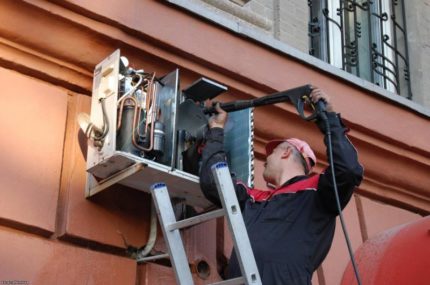
Either an open circuit has occurred, or a short circuit has occurred on the sensor.
H38. Inconsistency between brand codes of indoor unit and external.
H39. The indoor unit has frozen in standby mode. Occurs due to abnormal unit evaporator temperature. Such an indication appears simultaneously on all blocks, except for the block on which freezing of the evaporator is observed. An error code F17 appears on the last block.
The problem is due to the fact that:
- the solenoid valve of the outdoor unit is out of order;
- Freon and control wires are mixed up.
H41. Incorrect wiring and freon wiring.
H 50. Faulty fan motor. Or problems with the internal module board.
H51. Clogged nozzle.
H52. A limiter switch malfunction has occurred. Or problems with the internal module board.
H58. The malfunction is fixed in the PatrolSensor block.
H64 There is a malfunction in the high pressure sensor installed in the outdoor unit. The high pressure sensor remains open for one minute with the compressor stopped. The cause of the failure may be a failure of the sensor itself, damage / wire breakage or problems with the connectors on the board.
H97. The engine of the external unit is jammed: the actual speed of the engine does not match the one set by the processor.
The reason for the failure lies in:
- damage to the motor of the external unit;
- breakdown of the internal module board;
- in problems with the connectors of the wires (they need to measure the voltage).
H98. The protection of the indoor module against excessive pressure or overheating of the module in heat mode has worked. When the temperature of the heat exchanger in the indoor module rises to + 52 ° C, protection is activated, and at a temperature of + 65 ° C the compressor stops completely. The compressor restarts after the temperature drops.
The problem may appear due to:
- insufficient heat removal from the heat exchanger;
- heat exchanger contamination;
- incorrect readings of the sensor installed in the heat exchanger;
- warming up the indoor unit during start-up to heat.
H99. In operating mode, the evaporator of the indoor unit freezes. The speed limit is activated if the temperature in the indoor unit drops to + 8 ° C. The compressor stops at 0 ° C and then restarts when the temperature rises. The restriction is removed when the temperature rises to + 13ºС.
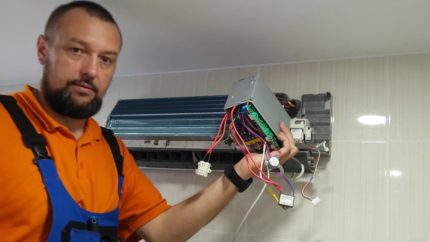
The problem may occur due to:
- refrigerant leakage or insufficient refueling;
- clogged capillary tube;
- moisture in the refrigeration circuit.
F11 This error indicates the incorrectness of the 4-way valve responsible for the cold / heat switching.The cause may be defects in its mechanism or in the electromagnetic valve coil.
F17. Freezing of the indoor module in standby mode is detected. The indicator is triggered precisely on the block on which freezing occurs.
The cause may be a malfunction of the solenoid valve (leakage) of the corresponding circuit of the outdoor unit. Incorrect data from the heat exchanger sensor of the indoor unit can also lead to an error indication.

If the error appears immediately after the first start of the system, then installation of air conditioning Freon and control wires were mixed up.
F90 An error occurs when the compressor speed stops synchronizing with the processor signal.
The signal will appear:
- when the compressor windings break (each winding under normal conditions should have a resistance of about one Ohm);
- if there is a difference in the resistance of the windings;
- if a malfunction occurs in the inverter circuit of the outdoor unit board.
To eliminate the malfunction, measure the resistance and voltage.
F91. The error indicates incorrect operation of the refrigeration circuit or low pressure protection is triggered in it.
A malfunction occurs if:
- no freon;
- The three-way valve on the outdoor unit is faulty.
F93 The signal indicates a mismatch between the actual compressor performance and the controller control signals. In other words, when its speed does not coincide with the control signals of the controller. In this case, the system stops.
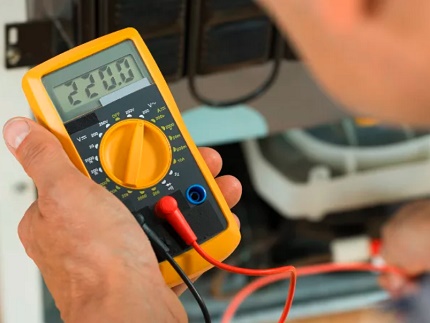
F94Protection is triggered due to excessively high discharge pressure. It is necessary to check the operation of the refrigeration circuit.
F95 In cooling mode, the external module has been protected from high pressure. A problem may occur in the refrigeration circuit or due to overheating of the heat exchanger of the outdoor unit.
F96. The overheating of the power module is detected, and in the multisystems the compressor thermotable opened.
Possible causes of the error:
- pollution of the heat exchanger of the external module;
- contamination of the refrigeration circuit;
- power module defect;
- compressor failure.
F97. The high discharge temperature in the compressor is fixed, the compressor overheats. The error may reset after 20 minutes of uptime. One of the signs of an error is the frequent shutdown of the external module for no apparent reason.
The causes of the problem may be:
- refueling;
- data error in the discharge pipe sensor in the compressor;
- interturn circuit in the compressor windings;
- damage to the fan of the external module.
F98The protection for the total current consumed has tripped. An inadequately high current consumption of the external module is detected in the operating mode. The cause of the error must be sought in the contamination of the refrigeration circuit or in the contamination of the heat exchanger of the outdoor unit.
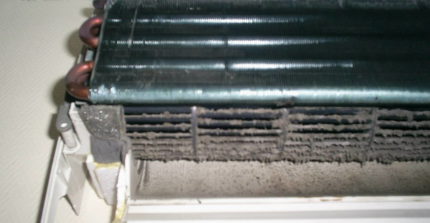
An error can occur with a strong subsidence of the voltage in the power supply at the time of turning on the air conditioner or during operation.
F99 This is a DC protection error signal. Possible causes of the error:
- jamming of the compressor;
- transistor module failure;
- defect of the current sensor installed in the outdoor module board;
- the resistance in the compressor windings has fallen below normal. It is necessary to measure the resistance in the compressor windings and in the transistor module.
In order to understand what this or that error of Panasonic air conditioners shows, you need to download the service manual for a specific model from the network and look in the error section.
Standard Care Requirements
The instructions for the air conditioners of this brand must describe their care procedures. This part of the documentation should be studied especially carefully, since following these guidelines will help reduce the number of breakdowns.
Failures in Panasonic air conditioners may require expensive repairs and even the purchase of expensive parts to restore the device’s performance. Therefore, regular maintenance according to the requirements of the manufacturer is especially important for technology.
Most care procedures do not require much knowledge and do not take much time, but some will require disassembling the blocks, so it is better to contact the help of a wizard from a certified service center.
Conclusions and useful video on the topic
To see how the Panasonic air conditioner is cleaned, you can in this video:
How to check the internal module for errors will demonstrate the following video:
Intelligent Panasonic air conditioning systems are able to timely notify the owner of the climate device about a malfunction that occurred in the bowels of the unit. Decryption information can be found in the passport or video review.
Having found out the error code, a person can make a decision - to correct the situation on their own (for example, to clean the drainage) or call the wizard for a more complicated repair.
Tell us about how they identified a violation in the operation of the climate system of the Panasonic brand by code. Share the nuances of diagnosing and troubleshooting the known problems. Leave comments, please, in the block below, post photos and ask questions about controversial and interesting points.


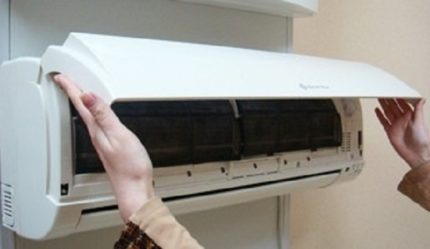
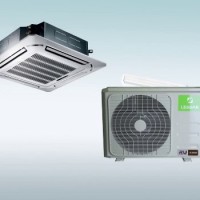 Errors of Lessar air conditioners: identification of breakdowns by code and instruction on troubleshooting
Errors of Lessar air conditioners: identification of breakdowns by code and instruction on troubleshooting 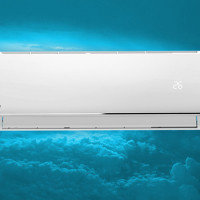 Errors of Beko conditioners: definition of breakdown by code and repair methods
Errors of Beko conditioners: definition of breakdown by code and repair methods  Errors of Samsung air conditioners: how to detect a malfunction in the code and troubleshoot
Errors of Samsung air conditioners: how to detect a malfunction in the code and troubleshoot 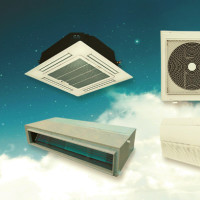 Errors of Vertex conditioners: how to find the violation by the code and correct the situation
Errors of Vertex conditioners: how to find the violation by the code and correct the situation 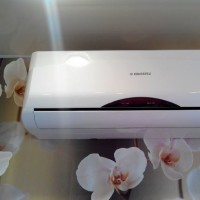 Errors of Kentatsu air conditioners: how to identify a violation by code and carry out repairs
Errors of Kentatsu air conditioners: how to identify a violation by code and carry out repairs 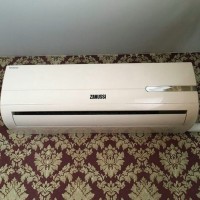 Errors of air conditioners Zanussi: codes of malfunctions and instruction on their elimination
Errors of air conditioners Zanussi: codes of malfunctions and instruction on their elimination  How much does it cost to connect gas to a private house: the price of organizing gas supply
How much does it cost to connect gas to a private house: the price of organizing gas supply  The best washing machines with dryer: model rating and customer tips
The best washing machines with dryer: model rating and customer tips  What is the color temperature of light and the nuances of choosing the temperature of the lamps to suit your needs
What is the color temperature of light and the nuances of choosing the temperature of the lamps to suit your needs  Replacement of a geyser in an apartment: replacement paperwork + basic norms and requirements
Replacement of a geyser in an apartment: replacement paperwork + basic norms and requirements